Related Research Articles

The East Midlands is one of nine official regions of England. It comprises the eastern half of the area traditionally known as the Midlands. It consists of Derbyshire, Leicestershire, Lincolnshire, Northamptonshire, Nottinghamshire, and Rutland. The region has a land area of 15,624 km2 (6,032 sq mi), with an estimated population 4,934,939 in 2022. With a sufficiency-level world city ranking, Nottingham is the only settlement in the region to be classified by the Globalization and World Cities Research Network.

Nottinghamshire is a ceremonial county in the East Midlands of England. The county borders South Yorkshire to the north-west, Lincolnshire to the east, Leicestershire to the south, and Derbyshire to the west. The largest settlement is the city of Nottingham (323,632), which is also the county town.

Derbyshire is a ceremonial county in the East Midlands of England. It borders Greater Manchester, West Yorkshire, and South Yorkshire to the north, Nottinghamshire to the east, Leicestershire to the south-east, Staffordshire to the south and west, and Cheshire to the west. Derby is the largest settlement, and Matlock is the county town.

The Midlands is the central part of England, bordered by Wales, Northern England, Southern England and the North Sea. The Midlands correspond broadly to the early-medieval kingdom of Mercia, and later became important in the Industrial Revolution of the 18th and 19th centuries. They are now split into two official regions, the West Midlands and East Midlands. The Midlands' biggest city, Birmingham, is the second-largest in the United Kingdom. Other important cities include Coventry, Derby, Leicester, Lincoln, Nottingham, Stoke-on-Trent, Wolverhampton, and Worcester.

North East Derbyshire is a local government district in Derbyshire, England. The council is based in the large village of Wingerworth. The district also includes the towns of Dronfield and Clay Cross as well as numerous villages and surrounding rural areas.
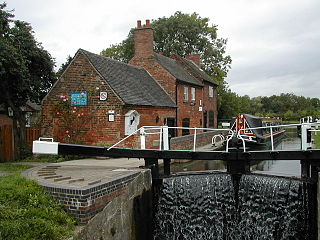
Sandiacre is a village and civil parish in the borough of Erewash in Derbyshire, in the East Midlands region of England adjoining the border with Nottinghamshire. The population of the parish was 8,889 at the 2011 Census.

The Nottingham Built-up Area (BUA), Nottingham Urban Area, or Greater Nottingham is an area of land defined by the Office for National Statistics as built-up land with a minimum area of 20 hectares, while settlements within 200 metres of each other are linked. It consists of the city of Nottingham and the adjoining urban areas of Nottinghamshire and Derbyshire, in the East Midlands of England. It had a total population of 729,977 at the time of the 2011 census. This was an increase of almost 10% since the 2001 census recorded population of 666,358, due to population increases, reductions and several new sub-divisions.
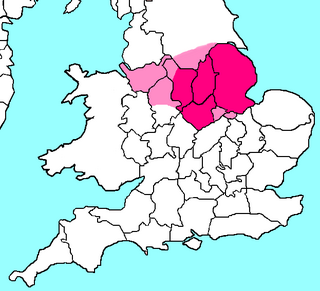
The North Midlands is a loosely defined area covering the northern parts of the Midlands in England. It is not one of the ITL regions like the East Midlands or the West Midlands.

Nottingham City Council is the local authority for the city of Nottingham, in the ceremonial county of Nottinghamshire in the East Midlands region of England. Nottingham has had a council from medieval times, which has been reformed on numerous occasions. Since 1998 the council has been a unitary authority, being a district council which also performs the functions of a county council. Since 2024 the council has been a member of the East Midlands Combined County Authority.

Derbyshire County Council is the upper-tier local authority for the non-metropolitan county of Derbyshire in England. The non-metropolitan county is smaller than the ceremonial county, which additionally includes Derby. The county council is based at County Hall in Matlock. Since 2017 the council has been under Conservative majority control. The council is a constituent member of the East Midlands Combined County Authority.
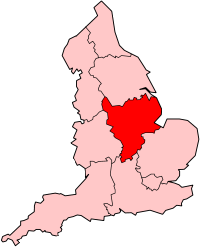
East Midlands English is a dialect, including local and social variations spoken in most parts of East Midlands England. It generally includes areas east of Watling Street, north of an isogloss separating it from variants of Southern English and East Anglian English, and south of another separating it from Northern English dialects. This includes the counties of Derbyshire, Leicestershire, Lincolnshire, Nottinghamshire, Rutland and Northamptonshire. Dialects of northern Derbyshire, Nottinghamshire and Lincolnshire usually share similarities with Northern English dialects. Relative to other English dialects, there have been relatively few studies of East Midlands English.

Nottinghamshire County Council is the upper-tier local authority for the non-metropolitan county of Nottinghamshire in England. It consists of 66 county councillors, elected from 56 electoral divisions every four years. The most recent election was held in 2021.
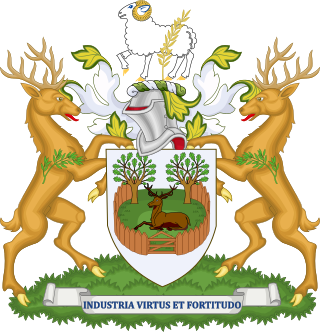
Derby City Council is the local authority for the city of Derby, in the ceremonial county of Derbyshire in the East Midlands region of England. Derby has had a council from medieval times, which has been reformed on numerous occasions. Since 1997 the council has been a unitary authority, being a district council which also performs the functions of a county council. Since 2024 the council has been a member of the East Midlands Combined County Authority.

In England, local enterprise partnerships (LEPs) were voluntary partnerships between local authorities and businesses, set up in 2011 by the Department for Business, Innovation and Skills to help determine local economic priorities and lead economic growth and job creation within the local area. They carried out some of the functions previously carried out by the regional development agencies which were abolished in March 2012. In certain areas, funding was received from the UK government via growth deals. Funding for LEPs was withdrawn by the Rishi Sunak Conservative government in April 2024 and their functions were assumed by local authorities, some of whom have formed Business Boards as replacements.

The South Yorkshire Mayoral Combined Authority is the combined authority for South Yorkshire in England, with powers over transport, economic development and regeneration. It covers a total area of 3,484 km2 (1,345 sq mi) with a population of 1.8 million. The four metropolitan boroughs of South Yorkshire – Sheffield, Rotherham, Doncaster and Barnsley – are full members of the authority, while the Derbyshire Dales, North East Derbyshire, Chesterfield and Bolsover districts of Derbyshire, and the Bassetlaw district of Nottinghamshire, are non-constituent members.

Local transport bodies are partnerships of local authorities in England outside Greater London. There are 38 local transport bodies. They cover similar areas to local enterprise partnerships, but are not permitted to overlap each other. Decision making for major transport infrastructure spending is devolved to these bodies from the Department for Transport. They will receive funding from April 2015.

The Borough of Chesterfield is a non-metropolitan district with borough status in Derbyshire, England. It is named after the town of Chesterfield, its largest settlement, and also contains the town of Staveley and the large village of Brimington. In 2022 it had a population of 104,110.

The East Midlands Combined County Authority (EMCCA) is a combined county authority in England. The authority covers the two ceremonial counties of Derbyshire and Nottinghamshire in the wider East Midlands which despite its name the combined county authority only covers these two out of the six ceremonial counties that make up the region as a whole.
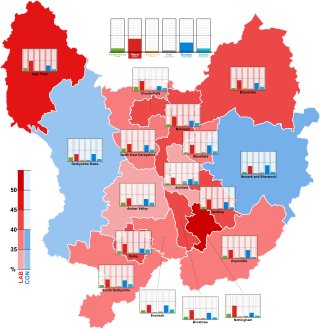
The 2024 East Midlands mayoral election was held on 2 May 2024 to elect the first mayor of the East Midlands. It was part of the local elections across England and Wales.
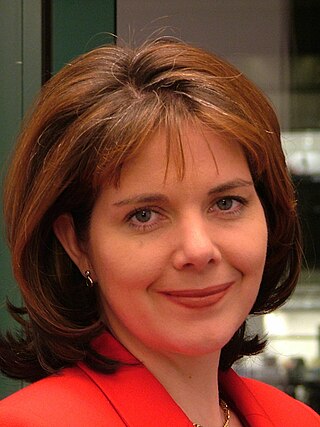
The Mayor of the East Midlands is a combined county authority mayor of the new East Midlands Combined County Authority, elected for the first time in May 2024.
References
- ↑ "Chesterfield chooses D2N2 LEP over Sheffield City Region - The Transport Network". www.transport-network.co.uk.
- ↑ "Chesterfield elect to remain within D2N2". www.d2n2lep.org.
- ↑ https://d2n2lep.org/the-d2n2-lep-staff-team-joins-the-east-midlands-combined-county-authority-emcca/
- ↑ "The Derbyshire and Nottingham Local Enterprise Partnership Board". www.d2n2lep.org.
- "D2N2 LEP". www.d2n2lep.org.
- Council, Nottinghamshire County. "Local enterprise partnerships". Nottinghamshire County Council.
- "D2N2 LEP: Derby, Derbyshire, Nottingham and Nottinghamshire Local Enterprise Partnership". ec.europa.eu. July 4, 2012.
- "D2N2 Growth Hub". D2N2 Growth Hub.
- "Latest News". D2N2 Growth Hub.